|
|
   
| Review: - Red Giant's Magic Bullet Denoiser |
December 2010
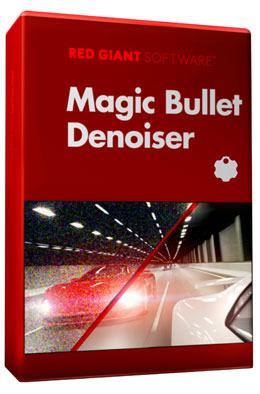
Red Giant's Magic Bullet Denoiser
www.redgiantsoftware.com - $99.00

Review by Steve Douglas
Low light = video noise, there is no doubt of that. Of course there are many other factors that contribute to video noise but the entire focus is where to go from here, when you have footage that simply can't be re-lit or shot. I have tested many 'denoiser' filters and have only found one or two that did a commendable job. However, as a result of their use there was definitely some softening of the image.
Seeing the need for a better tool, Red Giant, a company which produces some of the finest plug-ins for both Adobe After Effects and Final Cut Studio, has recently brought out their own Magic Bullet Denoiser.
The great thing is that the Magic Bullet Denoiser installs and works great at just its own default settings whether you are using Final Cut Pro or Adobe After Effects. Oddly enough, Denoiser also installs in Motion but can not be used in that application. It would have been wiser for the installer to be created only for the applications it was designed to be used in.
The interface of Magic Bullet's Denoiser is exactly the same whether you are using it in After Effects of Final Cut Pro so if you are familiar with it in one application you will be able to use it without any changes to your workflow, in the other.
The fact that Magic Bullet's Denoiser is so easy to use doesn't mean that there aren't parameters that you can use to tweak your image.
The Magic Bullet's Denoiser works by analyzing each video clip and by using motion estimation algorithms to remove noise from even very low light clips without blurring out the subject and softening the image.
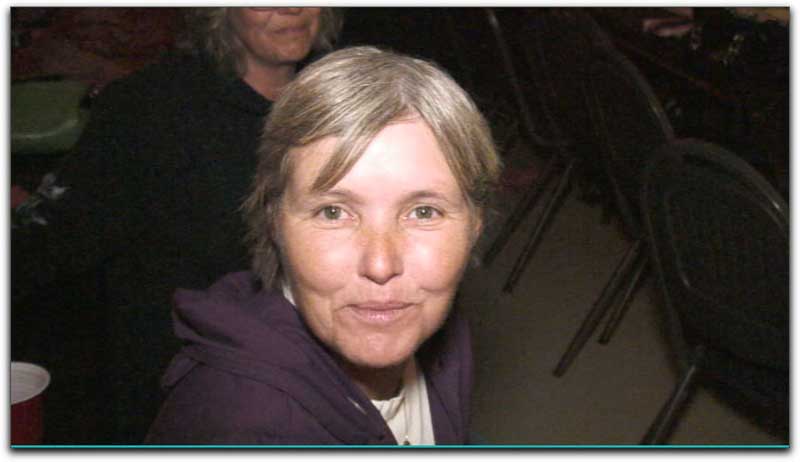
This frame was shot in an extremely low light setting with only an onboard light.
You can clearly see much video noise both on the carpet to the right and the woman's jacket in the background on the left.

With Magic Bullet's Denoiser applied with only the default settings, most of the video noise has disappeared.
There are 3 primary settings when opening the Denoiser controls in the Viewer. The Noise Reduction slider, when raised, looks for more noise. At its' default setting it does a good job, especially when there is not much movement by the subject. Increasing the Noise Reduction slider does create a smoother output though you don't want to push it too far to avoid excessive smoothing of your subject.
The Motion Estimation drop-down menu provides a choice of none, low and high which are set depending upon the type of clip you are applying the Denoiser filter to. The default setting of 'none' is best for single, non-moving subjects like talking heads or inanimate objects.
The 'low' setting is for slow pans or slow subject movement. If a clip has much motion you should raise the Motion Estimation to 'high' to keep moving details at as high a quality as you can. The higher the estimation the more Magic Bullet's Denoiser looks at multiple frames to determine what is noise and what is detail.
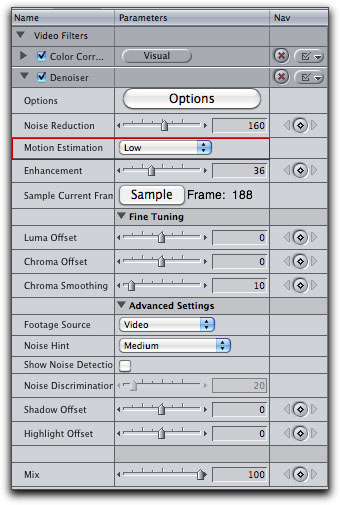
The 'Enhancement' control correspondingly brings back much of the fine detail and I found a setting of 75 usually was as far as I needed to bring it. Pushing it too far can create some noticeable artifacts but this was never an issue as long as I stayed below 75-80. In fact, it was only when I pushed it up to 95 that I really noticed any artifacts in the clips I was using.
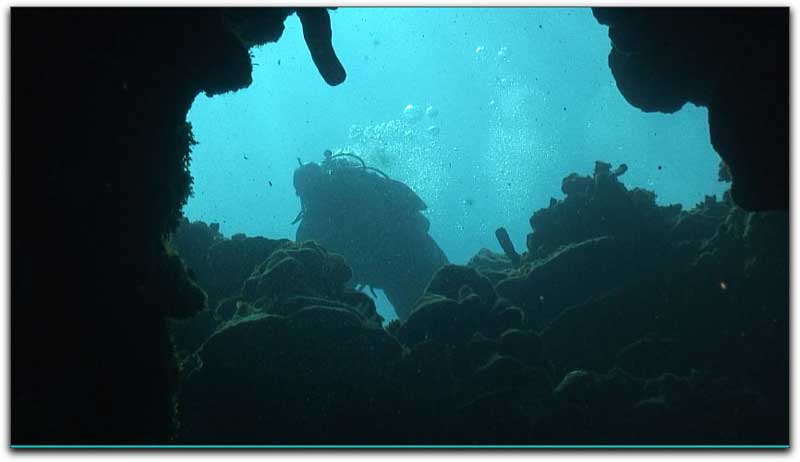
Original frame above.
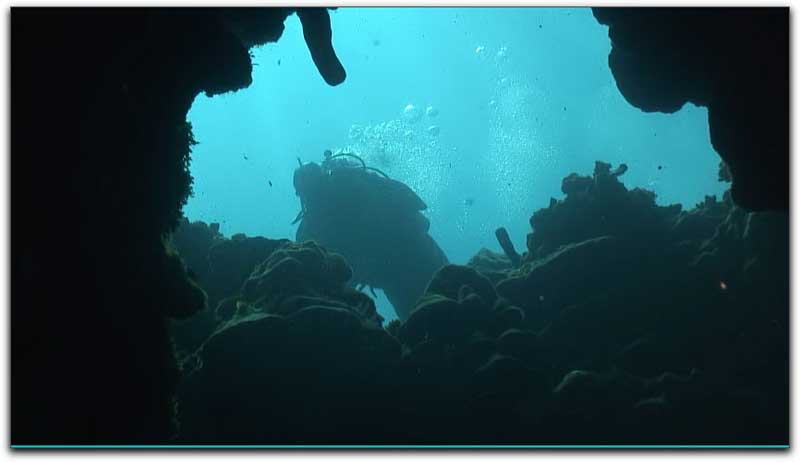
The same frame with the Denoiser applied. Notice that there is no loss of detail in the foreground rocks.
Though you might not need to use them, the Advanced Controls are there so that you can fine tune the Luma and Chroma settings as well as to use the Noise Discriminator to see just what the Denoiser filter is seeing as noise. This is a useful tool as you can then adjust the noise discriminator to see either more or less noise while avoiding smoothing and the possibility of your subject's details being mistakenly taken for noise.
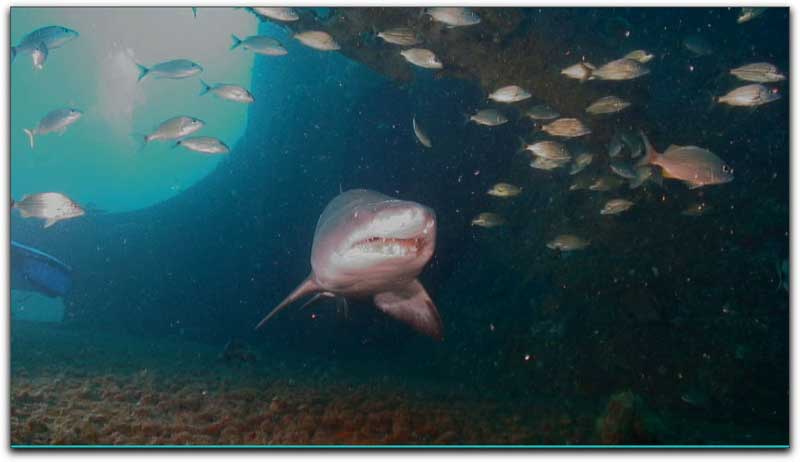
The original frame with a great deal of particulate in the water.
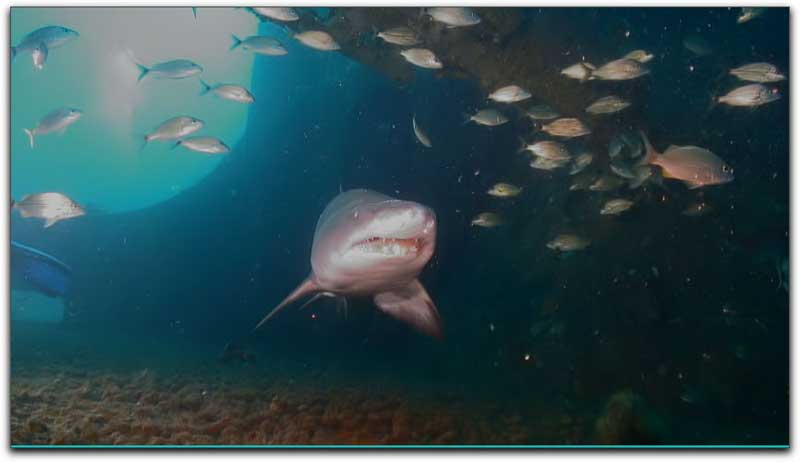
The same frame with the Magic Bullet Denoiser applied.
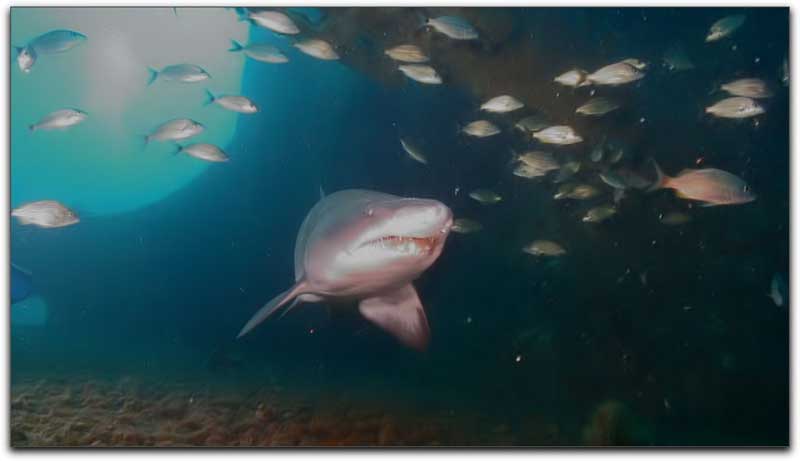
A following frame with the Noise Discrimination setting raised, shows further reduction in video noise while there is no loss of detail in the subject, a Sand Tiger Shark.
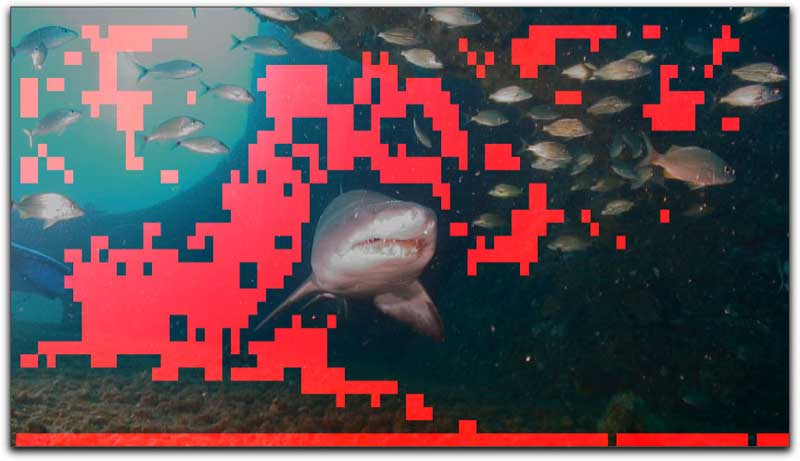
With the 'Show Noise Detection' box checked in the Advanced Settings,
I am able to see just what parts of the frame Magic Bullet's Denoiser is seeing as video noise and thus, adjusting its algorithms to the clip.
Only once during my testing of Magic Bullet's Denoiser did I encounter any problems. On one frame of a clip that was on a single layer of video with the addition of the 3-way Color Corrector I got a warning message. After clicking OK the same frame showed up in the Canvas with the left half of the image looking fine but the right half was a solid blue. I went back to the controls and clicked on the 'Sample Current Frame' to change the frame Denoiser was working on. Once I did that, all was fine.
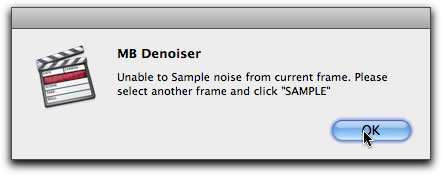
After contacting Red Giant inquiring about this warning I was told that the blue clip is a bug somewhere in their database which they are currently working on (it tends to happen when there are multiple clips on the time line and/or multiple plug-ins used). The 'Unable to sample frame warning' is a warning that pops up whenever denoiser encounters a frame where it can't properly detect the noise. In my case, this occurred with all clips on a single video layer but with the additional color corrector filter on the clip. Never the less, by changing the sample current frame to another, all went well. There were never any crashes or spinning beach balls and the Denoiser plug-in was stable at all times.
As I said before, I have been impressed with the quality consistency of any of the plug-ins I have ever used that were produced by Red Giant. Getting that quality results in slightly longer render times.
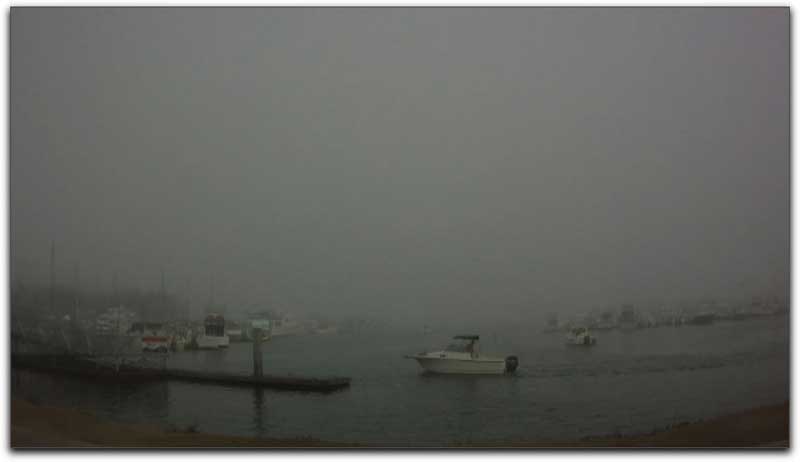
There wasn't a whole lot of noise in this foggy frame but I applied the Denoiser to it anyway.
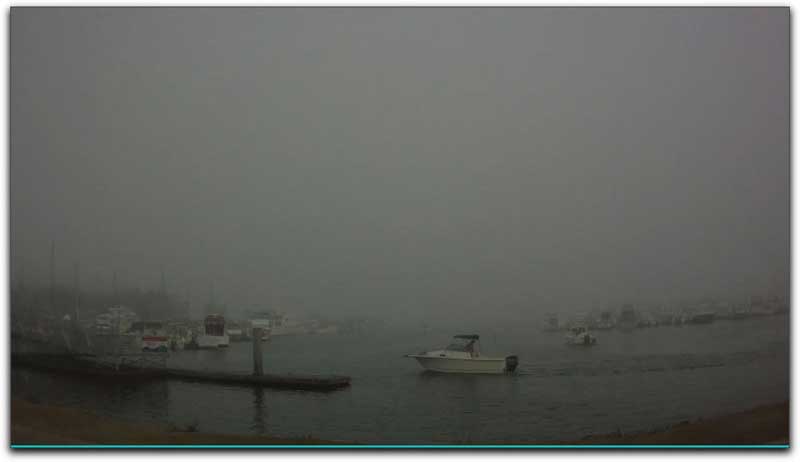
Once the Denoiser was applied, it actually added fine detail, which can be seen in the dark ridge line of the boat's upper hull.
Red Giant has consistently put up several quality tutorials to get the new user up and running and does so again with the Denoiser video tutorial. Several examples are demonstrated and a thorough review of the parameter uses are shown so I highly recommend that you take a look at the Denoiser Movie Tutorial.
On the other side of the coin, I do wish that they included some sort of 'check for updates' button or, at the very least, use the registration information to notify you when updates for their various software plug-ins are available. Though Red Giant does ask that you register your software plug-ins and provide contact information, unfortunately, despite my mentioning this issue numerous times, Red Giant has yet to act upon it.
Of all the noise reduction filters I have experimented with, I have found only 1 other that equals the quality of Magic Bullet's Denoiser. The difference between the two is that the Magic Bullet's Denoiser is so much easier to apply and adjust. Sometimes complexity can ruin the simplest of things. Knowing this, Magic Bullet has created an exceptional plug-in at an agreeable cost which will not fail to do the job it was intended to do. That it is so much easier to use now makes it my number 1 go to noise reduction plug-in. My bottom line says that Magic Bullet's Denoiser is not one to go without. If I were a betting man, I'd lay odds that you will be extremely happy with it.

Steve Douglas is a certified Apple Pro for Final Cut Pro 7 and underwater videographer. A winner of the 1999 Pacific Coast Underwater Film Competition, 2003 IVIE competition, 2004 Los Angeles Underwater Photographic competition, and the prestigious 2005 International Beneath the Sea Film Competition, where he also won the Stan Waterman Award for Excellence in Underwater Videography and 'Diver of the Year', Steve was a safety diver on the feature film "The Deep Blue Sea", contributed footage to the Seaworld Park's Atlantis production, and productions for National Geographic and the History channels. Steve was a feature writer for Asian Diver Magazine and is one of the founding organizers of the San Diego UnderSea Film Exhibition. He is available for both private and group seminars for Final Cut Pro and leads underwater filming expeditions and African safaris with upcoming excursions to the Cocos Islands, Costa Rica, Lembeh Straits, Indonesia, and Wakatobi. Feel free to contact him if you are interested in joining Steve on any of these exciting trips. www.worldfilmsandtravel.com
copyright © Steve Douglas 2010
This article first appeared on www.kenstone.net and is reprinted here with permission.
All screen captures and textual references are the property and trademark of their creators/owners/publishers.
|